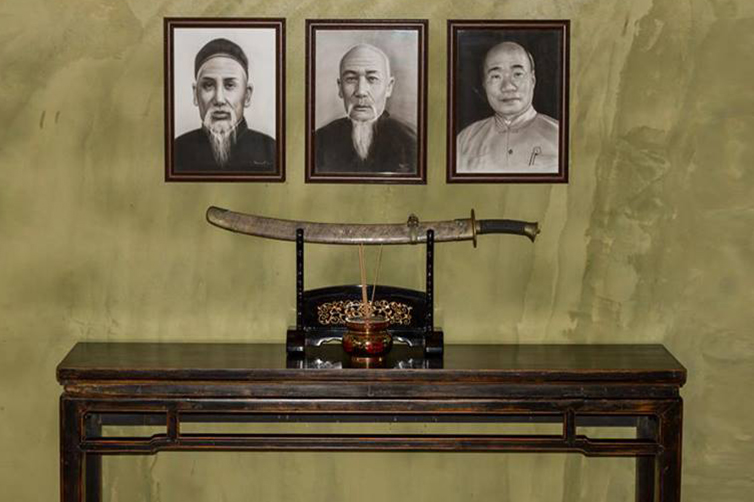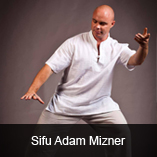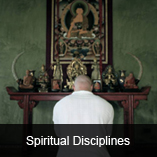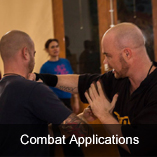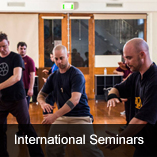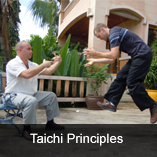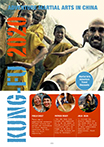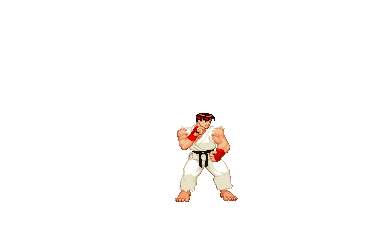Qigong is an essential component of Traditional Chinese Medicine and a powerful system of healing. It is the art and science of using breathing techniques, gentle movement, and meditation to cleanse, strengthen, and circulate the life energy (qi). Qigong practice leads to better health and vitality and a tranquil state of mind. Qigong can also be called Nei Gong (inner work) and Dao Yin (guiding energy).
The documented history of qigong goes back approximately 2,500 years. However Chinese archaeologists and historians have found references to qigong-like techniques at least five thousand years old.
Because qigong includes both dynamic and gentle techniques that can be practiced from standing, seated, and supine postures, it is suitable for young and old. Practices can be tailored to individual needs making it an ideal aid to recovery from illness or injury. Qigong is a form of complementary medicine, working well with other forms of therapy, but it should not be a substitute for necessary treatment by a physician.
Qigong for health and healing involves two major areas of application:
1. Healing Qigong (Yi Gong). Healing Qigong (sometimes translated "Medical Qigong") is the preventive and self-healing aspect of Chinese medicine. We are all exposed to stress. Qigong teaches us how to control our reactions to stress so that life’s events do not cause such symptoms as high blood pressure, frustration, or anxiety. Healthy people practice qigong to become super-healthy. Healers use qigong to prevent "healer burn-out" and to maintain a positive presence.
2. External Qi Healing (Wai Qi Zhi Liao). Qigong includes a sophisticated system of health assessment and non-contact treatment called External Qi Healing (EQH). The healer learns to tap into a well of healing energy in nature and "funnel" it through his or her body. Unlike some purely intuitive systems, EQH includes exercises that increase sensitivity to energy fields and efficacy of treatment. The more you practice External Qi Healing exercises and meditations, the more effective your healing treatment. External Qi Healing techniques may be used as a stand alone form of wellness treatment or may be combined with qigong massage, acupuncture, Therapeutic Touch, osteopathy, or any other form of body-work. Because treatment is generally performed at a distance from the body, EQH does not violate psychotherapists' professional ethics (which do not allow the touching of a patient) and is thus an ideal adjunct to body-centered psychotherapy.
Active Healing Qigong Exercises
In order to get the maximum health benefits from qigong self practice, moving or active qigong is believed to be more important than sitting or still meditation. This is because moving exercises increase qi circulation in specific organs and so restore their normal functions. Active Qigong is for maintaining health and longevity and curing illnesses caused by qi imbalances.
If you’re primarily interested in qigong for longevity qigong exercises derived from the Marrow/Brain washing classic are what you should learn. If you wish for a strong and healthy body you should learn the qigong exercises derived from the Muscle/Tendon Changing Classic (these qigong exercises are not only good for health, but increase the power of martial arts techniques).
Both these books where written by Da Mo the famous Indian Buddhist priest who brought Zen or Chan Buddhism to China. He imparted these works to the Shaolin priests so that they where strong enough for the rigors demanded of their training for enlightenment. Ideally a combination of exercises derived from these works will be the most beneficial.
Four Simple types of Active Qigong for health are:
Ba Duan Jin (Eight excellent movements),
Wu Qin Xi (Frolics of five animals),
Yi Jin Jing (tendon changing classic),
Liu Zi Jue (The art of expiration in producing six different sounds)
Ba Duan Jin (Eight excellent movements)
Ba Duan Jin, a traditional Chinese health and fitness Qigong exercise routine dated back to the Song Dynasty (960-1279), is a gem in China's health and fitness culture.
As a safe aerobic exercise, it features a movement of intensity and format in line with the theories of kinetics and physiology. Added to the traditional eight movements, are sections on the preparatory posture and closing form, making the exercises more complete, standardized and rational.
It has been proved that practice of Ba Duan Jin improves the respiratory system, limb strength, and flexibility of the joints, and fortifies the nerves, as well as enhances the general balance. It improves the cardiovascular function and helps to cure illnesses such as coronary artery scleroses and osteoporosis. It strengths one's immune system to a degree, and delays the ageing process, so as to increase the life span. It also improves one's mental health.
Wu Qin Xi (Frolics of five animals)
Wu Qin Xi, imitating the movements of animals, is a group of physical breathing exercises for health care with a uniquely Chinese national flavour. The system was designed by Hua Tuo, a leading physician of the Eastern Han Dynasty (25-220 AD). He developed his system based on existing ancient Chinese traditional physical exercises following theories of the functions of the internal organs and meridians as well as the principles of the circulation of qi and blood in the human body. His inspiration came from careful observation of the characteristic behaviour and activities of tigers, deer, bears, monkeys and birds. He came to the conclusion that wild creatures regularly performed certain exercises to build up their constitution and improve their life skills. In this book, the physical movements and spiritual expressions of those creatures are vividly described, and the principles of traditional Qigong exercises are used as guidance for students. During practice of the exercises, they are asked to coordinate their mind with the movements, and combine internal exercises with external exercises.
Movements are comparatively simple and easy to master and are suitable for people of different age groups.
Experience has proved that after a certain period of practice, both the physical and the mental health are improved. Indeed, physical and psychological tests of people who practice Wu Qin Xi give high scores to their overall constitution, the functions of the various organs, mental attitude and power of perception, as well as physical fitness. In addition, the waistline and ratio between waist and buttocks in female practitioners are reduced, the cardiovascular and respiratory functions are markedly improved, and the grip strength is reinforced. The exercises enhance bodily strength, flexibility of joints, spiritual vitality and psychological confidence.
Yi Jin Jing (tendon changing classic)
Yi Jin Jing is a health and fitness exercise handed down from ancient China.
Yi Jin Jing focuses on the turning and flexing of the spine, thus invigorating the limbs and internal organs. These movements have been proved to be able to improve health and fitness, prevent diseases, lengthen life and improve the intellect. In particular, practice of the Yi Jin Jing exercises has very impressive effects on the respiratory system, flexibility, balance and muscular strength. It can also prevent and cure diseases of the joints, digestive system, cardiovascular system and nervous system.
Yi Yin Jing requires the practitioner to keep his or her spirit totally relaxed. It involves an integration of mind and body, natural breathing, gentle movements infused with strength, and an interplay of the insubstantial and the substantial. Easy to learn and perform, this refreshing exercise has impressive health and fitness effects, and is adaptable to all age groups.
Liu Zi Jue (The art of expiration in producing six different sounds)
Liu Zi Jue is a traditional health and fitness practice focused on control of the breath.
Liu Zi Jue regulates and controls the rise and fall of Qi (vital energy) inside the body and related inhalation and exhalation through different mouth forms (six in all) to breath and pronounce the "XU, HE, HU, SI, CHUI, and XI" exercises. These exercises strengthen the liver, heart, spleen, lungs, kidneys and Sanjiao (the three portions of the body cavities housing the internal organs) respectively and help to balance the energy and functions of the inner organs.
These exercises are slow, gentle and graceful and are easy to learn. They are suitable for people of all ages and conditions of health.
Liu Zi Jue is safe and reliable and it helps to cure chronic diseases such as hypertension, hyperlipidemia and high blood sugar. Surveys reported that the practitioners found general improvement of quality of life, and an improvement of social and family relationships. It is believed that such an effect is the result of gentle breathing movements which calm the feelings and emotions.
Neigong, also spelled nei kung, neigung, or nae gong, refers to any of a set of Chinese breathing, meditation and spiritual practice disciplines associated with Daoism and especially the Chinese martial arts. Neigong practice is normally associated with the so-called "soft style", "internal" or neijia 內家 Chinese martial arts, as opposed to the category known as waigong 外功 or "external skill" which is historically associated with shaolinquan or the so-called "hard style", "external" orwàijiā 外家 Chinese martial arts. Both have many different schools, disciplines and practices and historically there has been mutual influence between the two and distinguishing precisely between them differs from school to school. There is both martial and non-martial neigong. Well known examples of martial neigong are the various breathing and focus trainings taught in some traditional Taijiquan, Baguazhang and Xingyiquan schools. An example of non-martial neigong is the discipline known as Daoyin.
